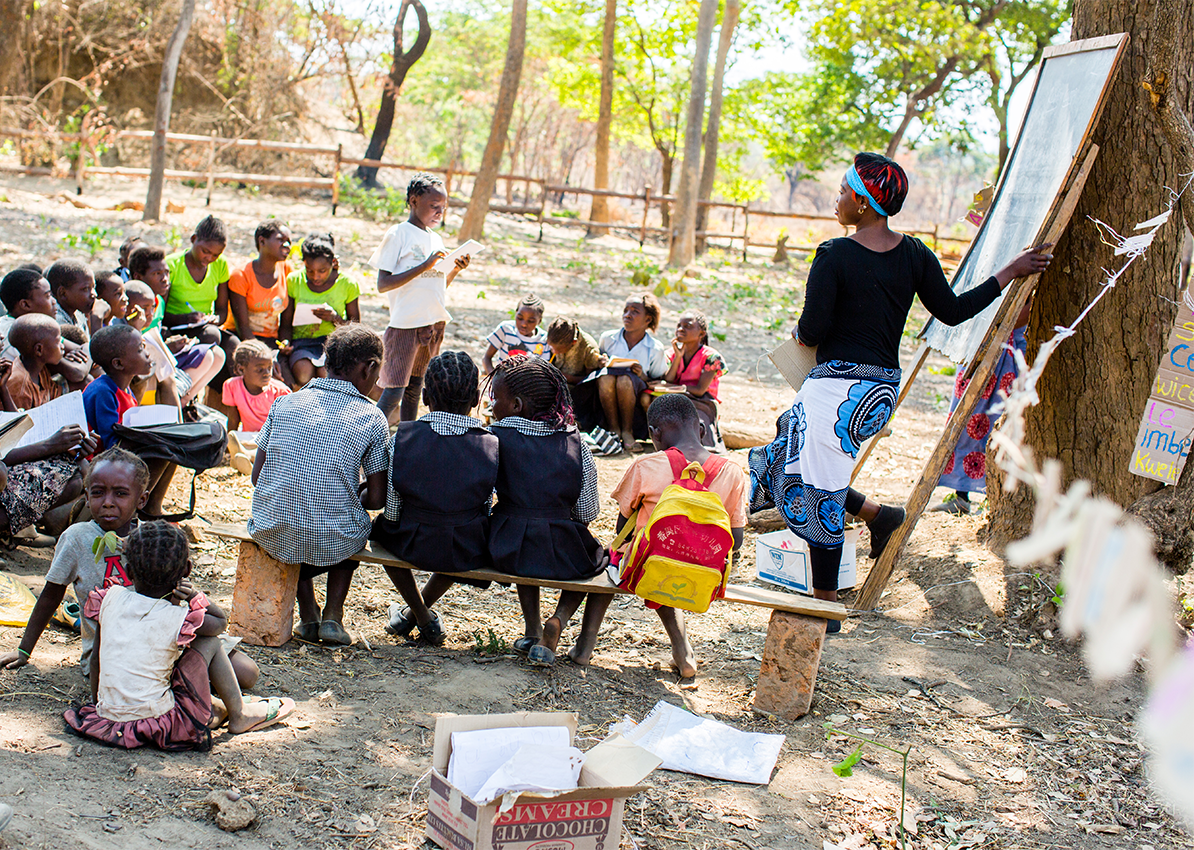
Reading camp counselor Prisca, 23, teaches students outside of her community school in the Copperbelt Province of Zambia. (Victoria Zegler/Save the Children)

Reading camp counselor Prisca, 23, teaches students outside of her community school in the Copperbelt Province of Zambia. (Victoria Zegler/Save the Children)
This semester I am completing the culminating experience for my minor in sustainability through an internship with Save the Children. During my time at as the Global Development Policy and Advocacy intern at Save the Children, I have learned much about the interconnected nature of the Sustainable Development Goals (SDGs) and the importance of public policy and advocacy. In other words, the individual goals cannot be achieved in isolation. The problems facing our society are complex, and therefore the solutions must be complex and cross-cutting as well. I have also gleaned the importance of shaping public policy in a way that is supportive of the SDGs and the importance of advocating for the rights and wellbeing of those who have no voice, such as children and marginalized groups.
Throughout my internship, much of my work has been related to global education and SDG4. Education is crucial in order to achieve the SDGs as a whole because children who have not received basic education will be subject to hardships and barriers throughout life. They will be more excluded from economic and civic life and are more likely to face challenges such as hunger. Furthermore, children are the future. They deserve to be empowered through learning and to be equipped to be the next leaders and innovators.
Save the Children’s hallmark campaign, Every Last Child, addresses global education and its other priority issues by shedding light on the children who are often overlooked. A cornerstone of this campaign is the principle that the most marginalized or excluded children should be prioritized first. These children include girls, refugees, children with disabilities, minority ethnic groups, and children from geographically disadvantaged or conflict-affected regions.
What does this exclusion look like? In terms of education, it means that two thirds of children who do not have access to quality education are from a minority ethnic group, and only one in four refugee children are enrolled in secondary education compared to three out of four worldwide. In short, the report highlights that, despite progress towards sustainable development, many children have been left behind and must now be brought to the forefront.
Save the Children was also instrumental in advocating for more language about equity in the SDG framework. Though the SDGs are at a very macro scale, they are helpful in shaping public policy at the national and local levels that promotes equitable sustainable development. Save the Children typically uses the following framework to guide its policy recommendations. It calls on governments to make three guarantees to all children: fair finance, equal treatment, and accountability. This involves, for example, investing in programs or services for marginalized populations, eliminating discriminatory policies, and disaggregating data.
Sustainability is often said to depend on addressing three underlying issues: the environment, the economy, and equity. These are known as the three E’s of sustainability. My work on global education at Save the Children ties in nicely to the equity aspect of sustainability, and I have been reminded that the needs of the most marginalized must be addressed in order to uphold the equity leg of sustainable development.
While the environment and the economy often dominate discussions around sustainability, let us not forget about equity and reaching the most marginalized populations. Only then will true sustainable development be possible.